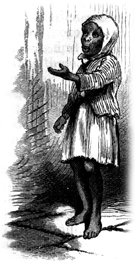



What Is the Outlook for the Endowments of the Black Colleges?
 Harvard University recently reported that its $36.9 billion endowment had lost 22 percent of its value in the July 1 to November 1, 2008 period. In dollar terms, Harvard’s loss is about $8 billion, more than the total endowment value of all but four universities: Princeton, Stanford, MIT, and Yale.
Harvard University recently reported that its $36.9 billion endowment had lost 22 percent of its value in the July 1 to November 1, 2008 period. In dollar terms, Harvard’s loss is about $8 billion, more than the total endowment value of all but four universities: Princeton, Stanford, MIT, and Yale.
The Harvard loss may turn out to be larger because Harvard has not dealt with valuation problems in alternative assets such as private corporate equity placements that are currently flooding the market at discounts of 50 percent.
It is possible, too, that there are other nonliquid investments in the Harvard portfolio where under present conditions there is no real way to determine value. In June 2008, Harvard had 9 percent of its endowment invested in timber and agriculture and a similar amount in real estate.
Other colleges and universities have reported endowment losses since July 1 of 25 percent or more.
JBHE has been unable to get any readings on the recent performance of endowment funds of black colleges and universities. Over the years, JBHE has regularly collected information on the endowment performance of the HBCUs. In the July 1, 2006 to June 30, 2007 period, when the Standard and Poor’s stock index rose by more than 20 percent, many of the black colleges with the largest endowments actually outperformed the funds at some of the nation’s wealthiest higher education institutions.
As of June 30, 2007, Howard University had the largest endowment of any of the black colleges. Its funds totaled nearly $524 million. Spelman College in Atlanta ranked second with an endowment of $340 million. The Spelman College endowment fund is considerably less than 1 percent of the endowment value of Harvard University. In its last report Hampton University in Virginia had an endowment of $257 million. But the vast majority of black colleges and universities have puny endowments that generate very little income.
There is a good chance that the black colleges will have smaller endowment percentage losses than the nation’s wealthiest universities and colleges. Black college funds are likely to be invested in low-risk government notes, high-yielding stocks and bonds rather than so-called growth stocks, securities that have been hit especially hard in the latest economic crunch. Also, the black colleges are unlikely to have invested in real estate and commodities where losses have been more severe than in the stock market. This conservative investment philosophy prevails because the black colleges depend on a sure source of income which they use to fund current operations.
In percentage terms, the black colleges may have taken a hit that is less severe than most of the predominantly white colleges and universities.
![]()
Copyright © 2008. The Journal of Blacks in Higher Education. All rights reserved.